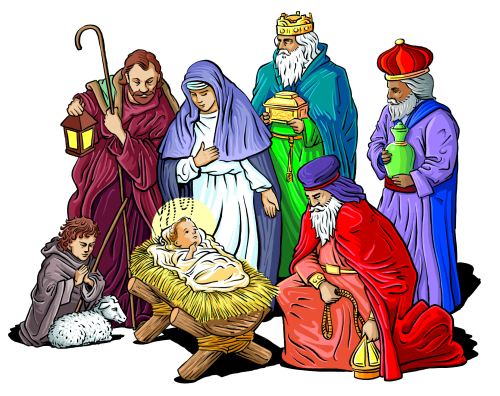Source(Google.com.pk)
Clip Art Baby Jesus Biography
A recently uncovered fragment of ancient papyrus makes the explosive suggestion that Jesus and Mary Magdalene were man and wife, researchers say.
The 8cm by 4cm fragment supports an undercurrent in Christian thought that undermines centuries of Church dogma by suggesting the Christian Messiah was not celibate.
The centre of the fragment contains the bombshell phrase where Jesus, speaking to his disciples, says 'my wife', which researchers believe refers to Magdalene.
Read more: http://www.dailymail.co.uk/news/article-2205235/Jesus-married-Proof-God-spoke-wife-Mary-Magdalene-ancient-papyrus.html#ixzz2J4EROCvQ
In the text, Jesus appears to be defending her against some criticism, saying 'she will be my disciple'. Two lines later he then tells the disciples: 'I dwell with her.'
If genuine, the document casts doubt on a centuries old official representation of Magdalene as a repentant whore and overturns the Christian ideal of sexual abstinence.
It elaborates an ancient and persistent undercurrent in Christian thought that Jesus and Magdalene were in fact a couple, as picked up by Dan Brown in the plot of his best-selling thriller The Da Vinci Code.
Read more: http://www.dailymail.co.uk/news/article-2205235/Jesus-married-Proof-God-spoke-wife-Mary-Magdalene-ancient-papyrus.html#ixzz2J4EfjnC7
The incomplete manuscript, written in the ancient Egyptian Coptic language, has been studied by Karen King, Hollis professor of divinity at Harvard University, the oldest endowed academic seat in the US.
Professor King was to present a paper on the discovery today at an international conference on Coptic studies in Rome after conducting extensive tests and research to establish the document's authenticity.
She told Smithsonian Magazine that the fragment casts doubt 'on the whole Catholic claim of a celibate priesthood based on Jesus’ celibacy.'
She added: 'What this shows is that there were early Christians for whom ... sexual union in marriage could ban imitation of God’s creativity and generativity and it could be spiritually proper and appropriate.
In a forthcoming paper in the Harvard Theological Review, Professor King speculates that this so-called 'Gospel of Jesus’s Wife' may have been tossed on the garbage 'because the ideas it contained flowed so strongly against the ascetic currents of the tides in which Christian practices and understandings of marriage and sexual intercourse were surging.'
Professor King downplays the fragment's validity as a biographical document, saying that it was probably composed in Greek a century or so after the Crucifixion, then subsequently transcribed into Coptic.
Its significance instead lies in the possibility that an early Christian sect drew spiritual succour from portraying their prophet as having a wife.
This representation of Jesus as a man with earthly passions and needs has not survived in the doctrines of the established churches, which emphasise celibacy and asceticism as a spiritual ideal.
Professor King's interpretation of the text are based on the assumption that the fragment igenuine, a question that is by no means definitively settled.
Because chemical tests of its ink have not yet been done, the papyrus could still be challenged on the basis of its authenticity, though independent experts have given their support based on other benchmarks.
To authenticate the papyrus, Professor King sent photos of it to AnneMarie Luijendijk, a professor at Princeton and an authority on Coptic papyri and sacred scriptures.
Professor Luijendijk forwarded the pictures to Roger Bagnall, a renowned papyrologist who directs the Institute for the Study of the Ancient World at New York University.
Known for his conservative assessments of the authenticity and date of ancient papyri, Professor Bagnall nevertheless confirmed that he believed the document was genuine.
The scribe's dialect and style of handwriting, and the colour and texture of the papyrus, helped them to date it to the second half of the fourth century AD and place its probable origin in upper Egypt.
The details of the fragment support another view of the life of Jesus that has begun to gain traction since the discovery of a cache of ancient manuscripts in Nag Hammadi, Upper Egypt, in 1945.
These manuscripts, including the gospel of Thomas, the gospel of Philip and the Secret Revelation of John, outline the so-called Gnostic version of Christianity which differs sharply from the official Church line.
Persecuted and often cut off from each other, ancient Christian communities had very different opinions on fundamental doctrines regarding Jesus' birth, life and death.
It was only with the establishment of Christianity as the state religion of the Roman Empire that the Emperor Constantine summoned 300 bishops to issue a definitive statement of Christian doctrine.
This so-called Nicene creed - named for Nicaea, the town where they met - affirmed a model of Christian belief that is to this day taken as orthodoxy.
The origins of this latest fragment are as yet unknown. Professor King received it from an anonymous collector who had found it among a job lot of ancient Greek and Coptic papyri.
Accompanying the fragment was an unsigned and undated handwritten note from a translator claiming it is the sole example of a text in which Jesus refers in direct speech to having a wife.
Professor King, who is able to read ancient Coptic, believes some of the phrases within the text echo passages in Luke, Matthew and the Gnostic gospels about the role of the family.
These parallels convinced her that this account of the life of Jesus was originally composed in the second century AD when such questions were a subject of intense theological debate.
Those who disagreed with the official line as established by the Council of Nicaea were in time branded by the Roman Church as heretics and their teachings suppressed.
Clip Art Baby Jesus

Clip Art Baby Jesus

Clip Art Baby Jesus

Clip Art Baby Jesus

Clip Art Baby Jesus

Clip Art Baby Jesus

Clip Art Baby Jesus

Clip Art Baby Jesus

Clip Art Baby Jesus

Clip Art Baby Jesus

No comments:
Post a Comment